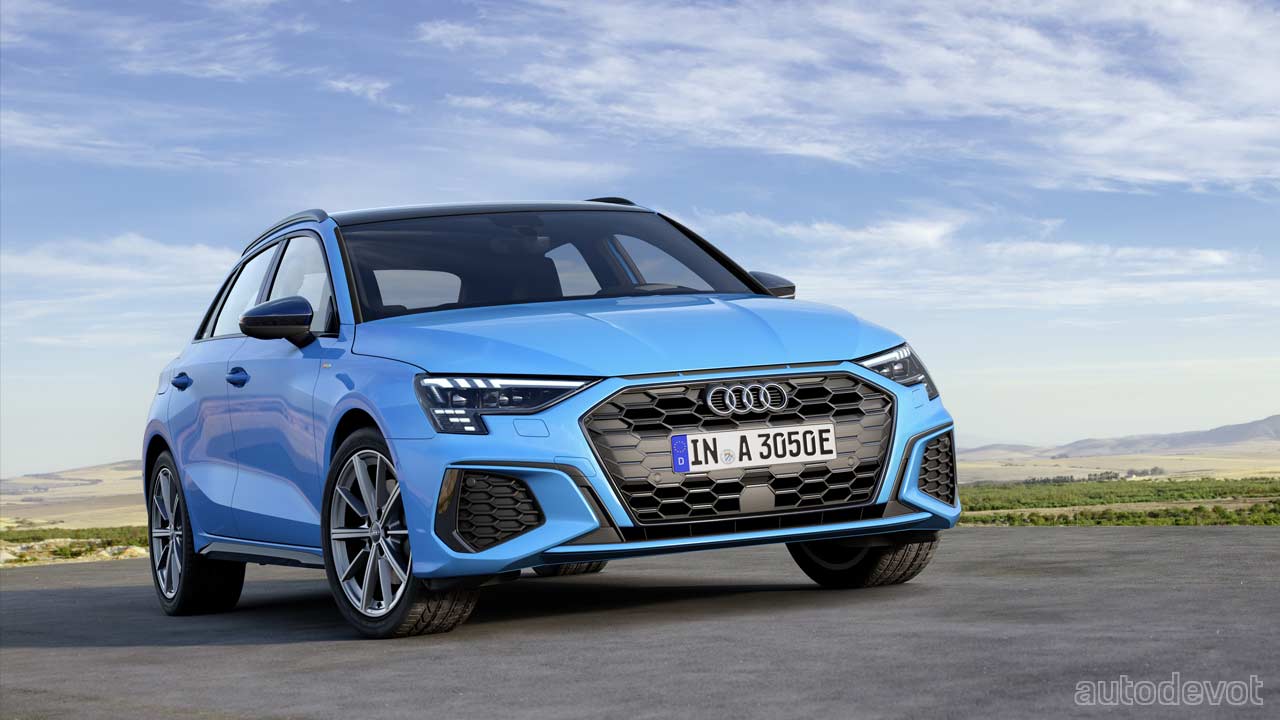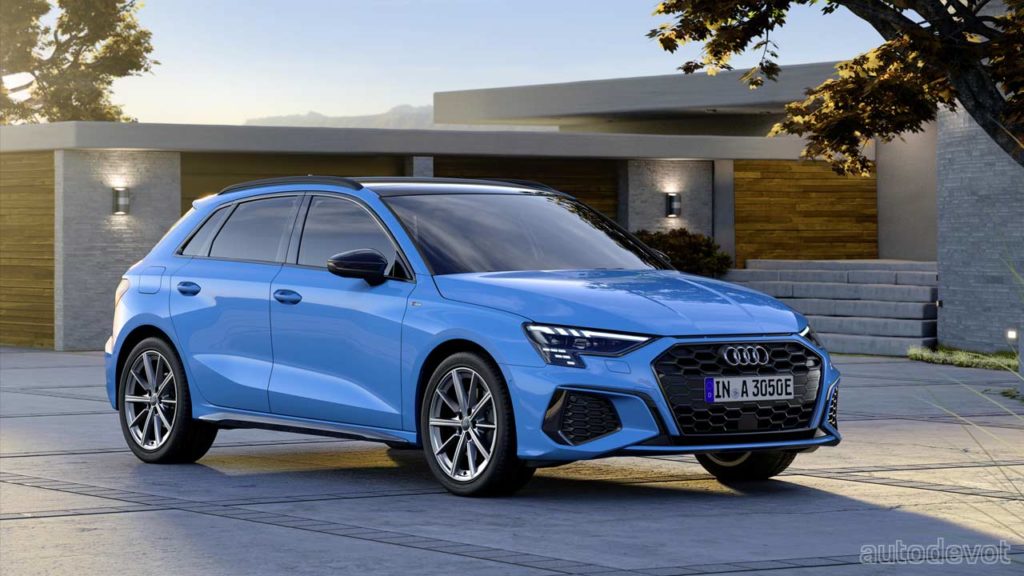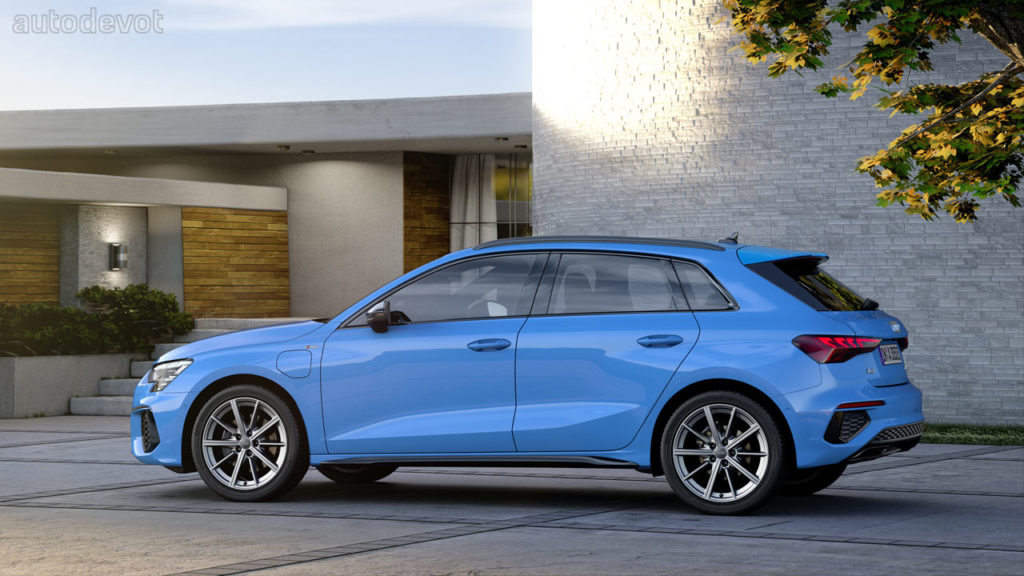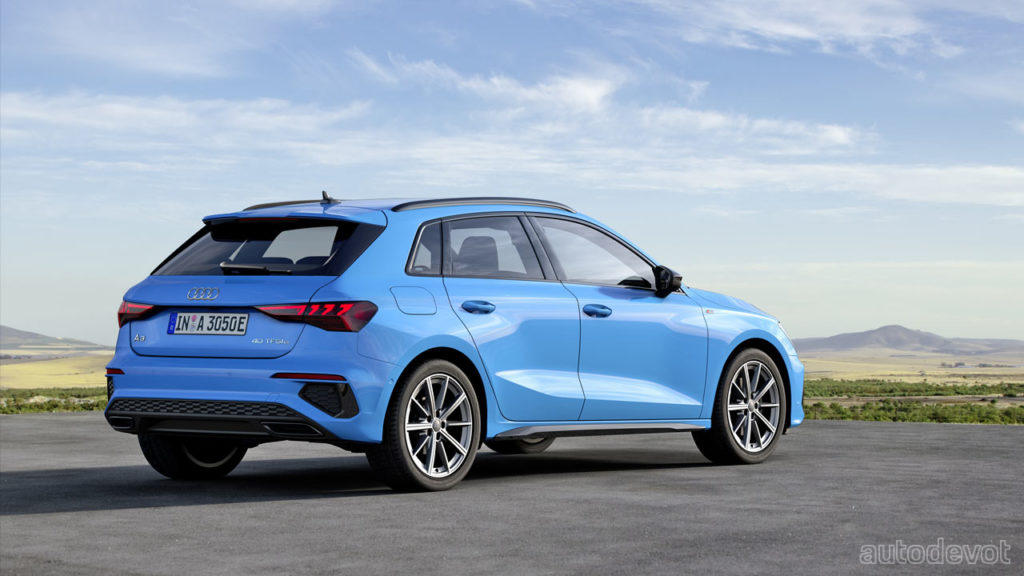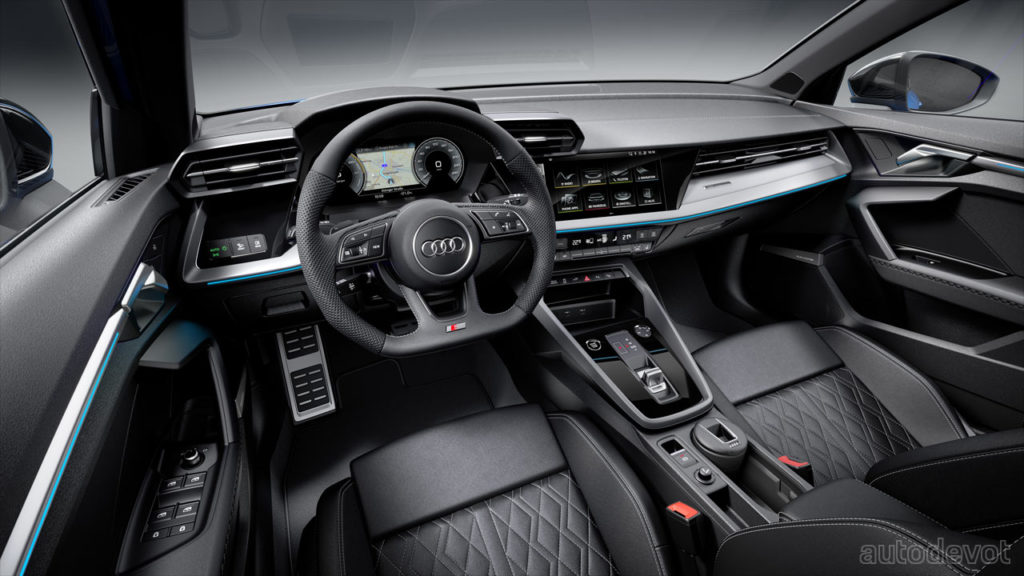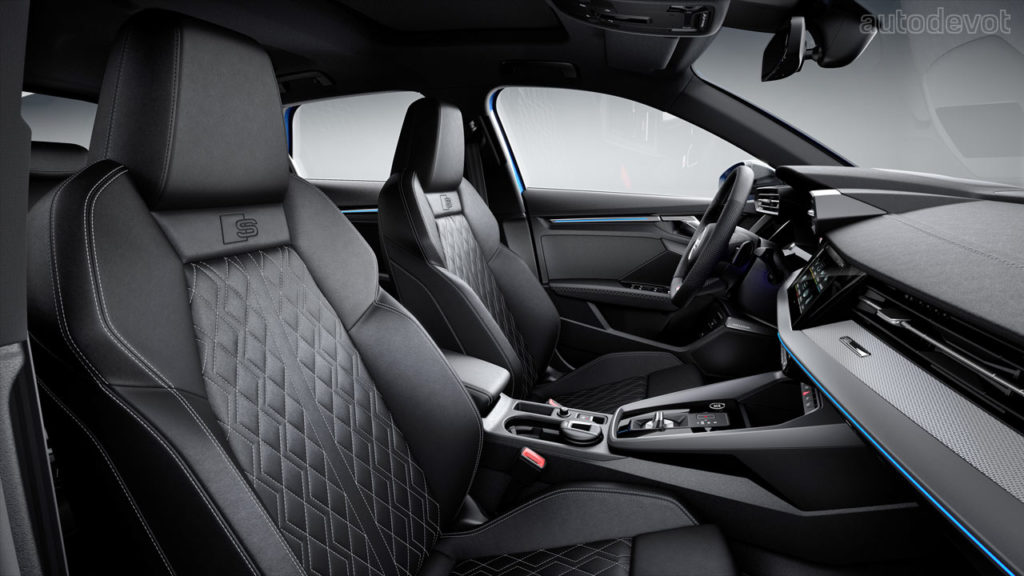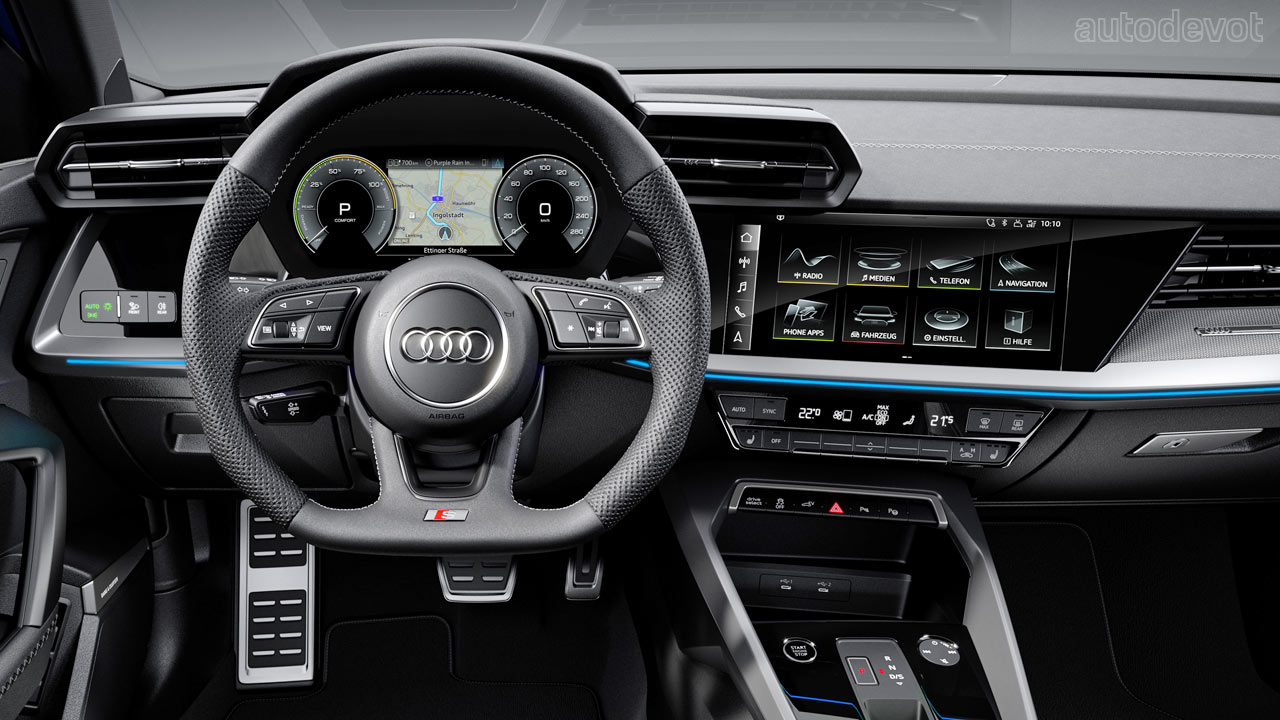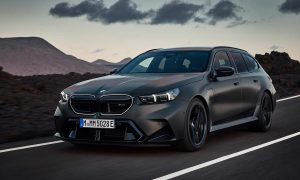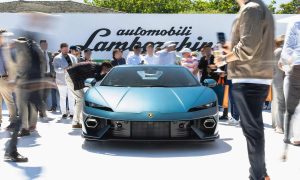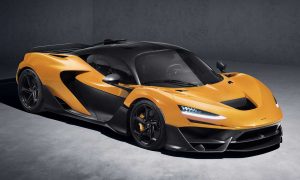After the g-tron variant, the new Audi A3 family has now received a plug-in hybrid sibling with a significant number of pure electric driving range. The A3 Sportback 40 TFSI e will go on sale by the end of this year, with prices starting at €37,470.92 in Germany. Customers in Germany are also entitled to get an incentive of €6,750.
Visually, the 40 TFSI e looks identical to the regular A3 Sportback with the optional Matrix LED headlights, and the running lights comprising a pixel array of 15 LED segments. As standard, the car rides on 16-inch alloy wheels, while up to 18-inch ones are available in the options list. The example here is finished in an exterior paint called Turbo Blue.
In the cabin, the seat upholstery is made of recycled PET bottles. The displays will have hybrid-specific functions, obviously. A standard digital instrument display or the optional Audi virtual cockpit displays the system’s output, the status of the drive, recuperation, battery’s state of charge, and the range. The central 10.1-inch MMI display shows the energy flow.
Powertrain
The plug-in hybrid powertrain is a combination of a 1.4-litre TFSI petrol engine and an electric motor (permanent magnet) integrated with the 6-speed S tronic gearbox. The ICE produces 150 hp (110 kW) and 250 Nm (184 lb-ft) of torque, while the e-motor develops 109 hp (80 kW) and 330 Nm (243 lb-ft) of torque. The combined figures, however, are 204 hp (150 kW) and 350 Nm (258 lb-ft) of torque.
The battery pack made of 96 prismatic cells store 13 kWh of energy, which is almost 48% more than in the predecessor. Audi claims a pure electric driving range of up to 78 km (49 mi) as per NEDC and 67 km (41 mi) as per WLTP. The car can also do a pure electric top speed of 140 km/h (87 mph).
When the A3 PHEV is in hybrid mode, the two drives divide the work intelligently. Two special modes can be selected via the MMI system: ‘Battery Hold’ and ‘Battery Charge’. In hold mode, the available battery charge is held at the current level. In charge mode, as much electricity as possible is supplied to the battery.
As for recuperation, the electric motor can recover up to 40 kW of energy while braking.

Leave a Reply
Note: Comments that are unrelated to the post above get automatically filtered into the trash bin.
